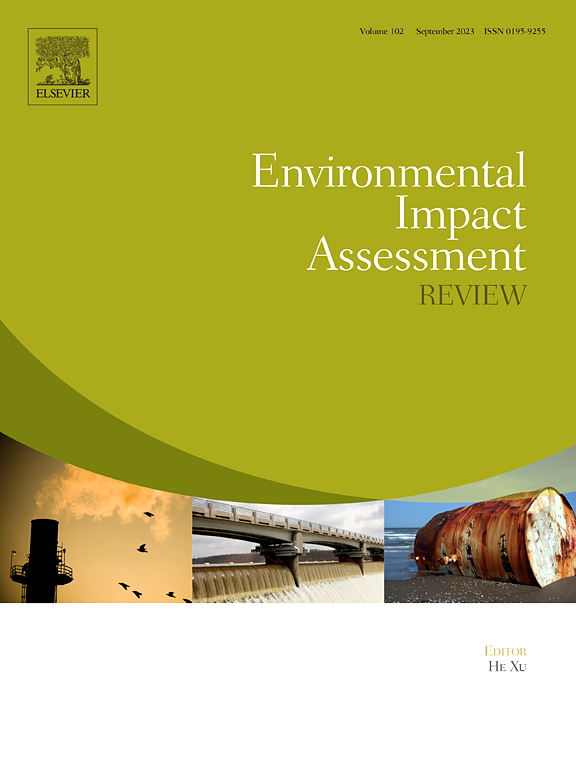Is market mechanism a reasonable path for agricultural emission reduction? Evidence from China carbon emission trading scheme
IF 9.8
1区 社会学
Q1 ENVIRONMENTAL STUDIES
引用次数: 0
Abstract
We examine the mechanism of the carbon emissions trading pilot to lower the emissions of agriculture using empirical data from China, from the viewpoints of market mechanisms and spatial spillover effects. We use the DID to assess the pilot program's effectiveness in curtailing GHG emissions. We find a significant advantage in limiting emissions, using carbon emission data from 30 Chinese provinces from 2011 to 2022. The results are as follows: (1) An inhibitory effect is detected, showing that introducing a carbon trading program could reduce agricultural carbon emissions by 0.167 %; this finding passed the robustness test. (2) The results of the intermediate impact model demonstrate that carbon emissions trading may play a role in influencing agricultural carbon emissions via technological innovation. (3) Meanwhile, regional resource allocation efficiency adjusts the carbon reduction effect. (4) Pilot regions demonstrate joint emission reduction effects with neighboring regions, which show a positive spillover effect. Therefore, scientific and agricultural technology innovation should be fostered to realize technological research, gradually form a market governance mechanism for agricultural soils, and comprehensively enhance the carbon sink capacity of agricultural soils. This will ensure the sustainable and steady development of food systems.

市场机制是农业减排的合理路径吗?来自中国碳排放交易机制的证据
本文从市场机制和空间溢出效应的角度,利用中国的经验数据,对碳排放交易试点降低农业二氧化碳排放的机制进行了实证研究。我们利用DID来评估试点项目在减少温室气体排放方面的有效性。利用2011年至2022年中国30个省份的碳排放数据,我们发现中国在限制二氧化碳排放方面具有显著优势。研究结果表明:(1)引入碳交易方案可减少农业碳排放0.167 %;这一发现通过了稳健性检验。(2)中间影响模型结果表明,碳排放权交易可能通过技术创新对农业碳排放产生影响。(3)同时,区域资源配置效率调节着碳减排效果。(4)试点地区与周边地区表现出联合减排效应,并呈现正向溢出效应。因此,应培育农业科技创新,实现技术攻城,逐步形成农业土壤市场治理机制,全面提升农业土壤碳汇能力。这将确保粮食系统的可持续和稳定发展。
本文章由计算机程序翻译,如有差异,请以英文原文为准。
求助全文
约1分钟内获得全文
求助全文
来源期刊

Environmental Impact Assessment Review
ENVIRONMENTAL STUDIES-
CiteScore
12.60
自引率
10.10%
发文量
200
审稿时长
33 days
期刊介绍:
Environmental Impact Assessment Review is an interdisciplinary journal that serves a global audience of practitioners, policymakers, and academics involved in assessing the environmental impact of policies, projects, processes, and products. The journal focuses on innovative theory and practice in environmental impact assessment (EIA). Papers are expected to present innovative ideas, be topical, and coherent. The journal emphasizes concepts, methods, techniques, approaches, and systems related to EIA theory and practice.
 求助内容:
求助内容: 应助结果提醒方式:
应助结果提醒方式:


